Programme for stayers remains top of the agenda

Ruth Quinn, Director of International Racing and Racing Development
I recently gave a presentation to the Thoroughbred Breeders’ Association about British racing and breeding’s collective responsibility to encourage the growth of the staying horse.
We have a responsibility to protect the future continued production of quality stayers, for a number of wide-ranging and significant reasons. These include the rich diversity of the race programme, maintaining variety in the gene pool and, as a consequence, the horse population, as well as safeguarding one of the most important, enviable and fascinating dimensions of British – and European – racing.
The data we have shows there has been a steady, downward progression across a number of key indicators relating to the health of the breeding and racing of the staying horse population.
Number of horses whose furthest run came over 13f or further, by year
Whilst the number of horses running over 13 furlongs or further has remained relatively constant since 2009, the proportion of total runners they account for has been in gradual decline over the last twenty years.
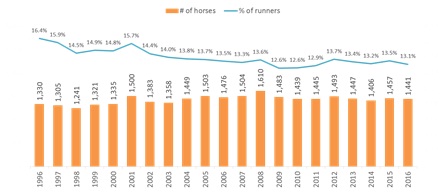
Race programme composition, by distance category and year
Although the number of stayers’ races has increased numerically over the last 20 years this has to be viewed in the context of increases to the overall size of the race programme. Around 3.3% of the programme has moved from long and extended trips to short and mile trips over this period.
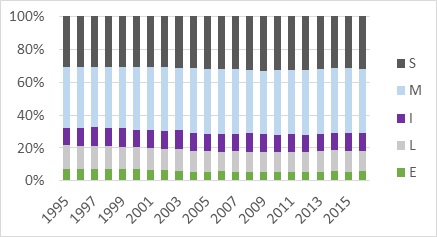
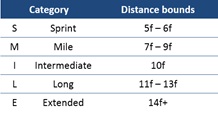
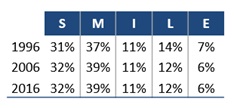
Number of stallions with GB runners, by maximum winning distance and year
There has been a marked decline in the proportion of runners that are by stallions that won over longer distances.
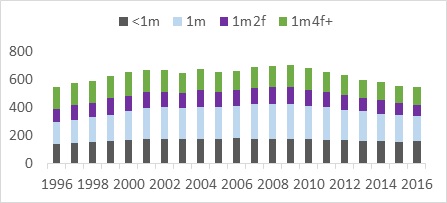

Whilst none of the data above shows dramatic recent slumps, it is clear that the trend lines are only going in one direction. We have recognised the threat that this poses and, following agreement from the European Pattern Committee (EPC), a BHA-led industry consultation took place last year.
Views from the consultation were used to help design a plan to address the challenges over a period of time. It was agreed that, in order to provide the best chance of achieving behavioural change across all sectors of the racing and breeding industry, a number of changes to all levels of the race programme needed to be introduced on a rolling basis, both in the short-term and over the subsequent three to five years.
We announced a number of these changes, which were headlined by the upgrade of the Qatar Goodwood Cup to Group 1 and Queen’s Vase to Group 2, at the beginning of the year.
The focus for 2017-18, with help from a sub-committee of the EPC, will be particularly focussed on boosting the black type stayers’ programme across Europe for fillies and mares and for the three year old.
Some initiatives are already in place and are bearing fruit, such as the Listed Silver Cup at York, which was converted from a handicap to a weight-for-age contest for its 2016 running, which increased the race’s rating considerably versus previous renewals, and the introduction of the Listed Beckford Stakes for fillies and mares over 14 furlongs at Bath last October.
There are a considerable number of grassroots initiatives being implemented right across the race programme too, which you can view here: Stayers Initiatives.
Achieving tangible change is not going to happen immediately, and this is a challenge facing all of European racing. However, with patience, commitment and determination, we believe that in time our agreed strategy will safeguard the future of the stayer and make it a more desirable asset in years to come.
